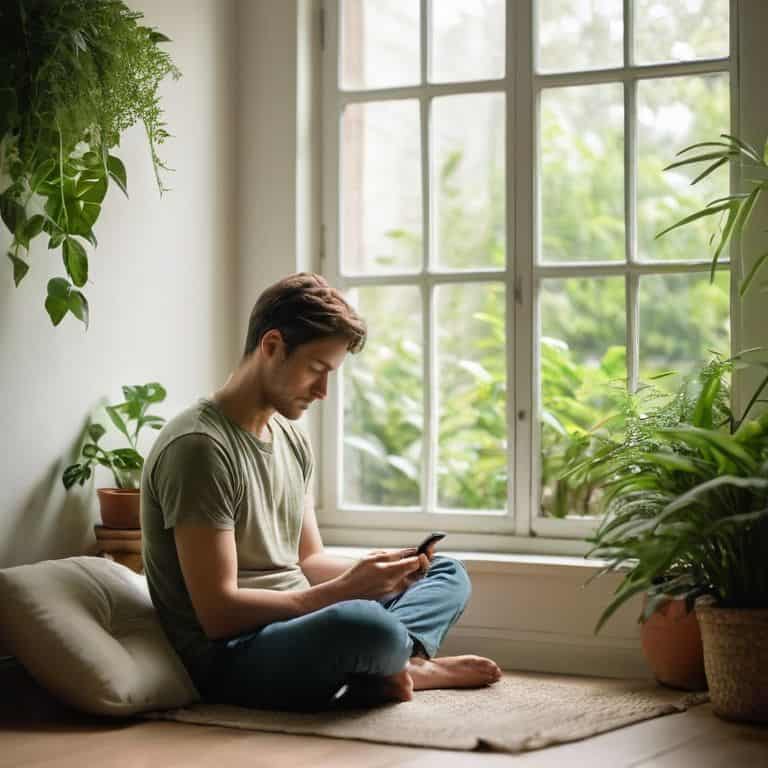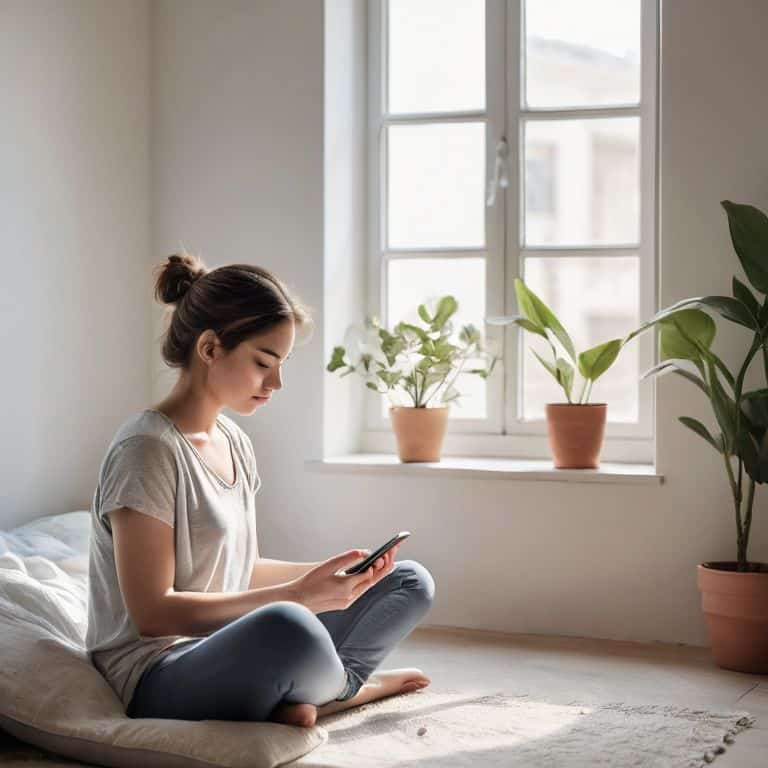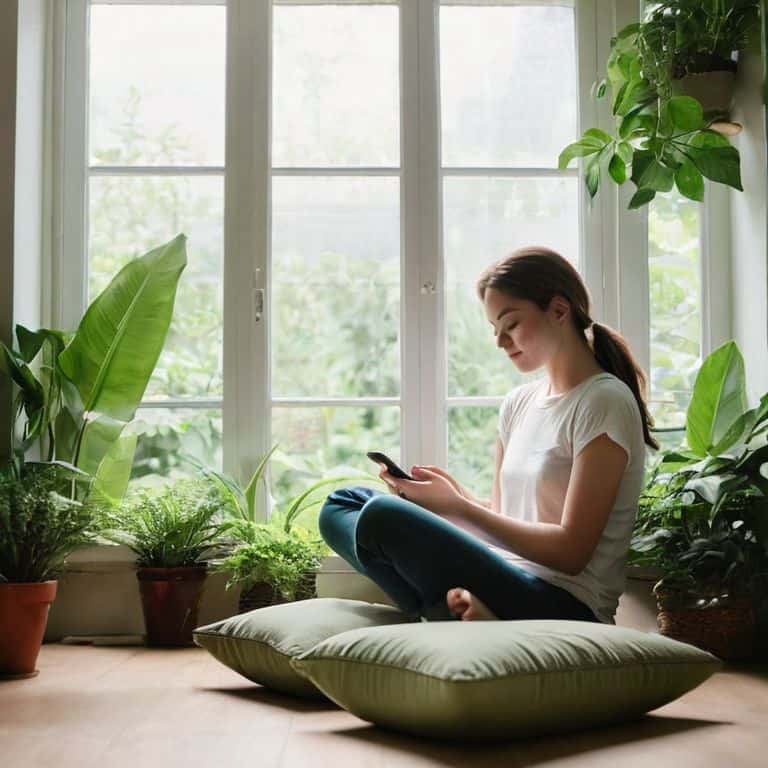I still remember the day I decided to start using a meditation app for beginners. I was feeling overwhelmed and stressed, and a friend recommended I try meditation to calm my mind. But as I searched for apps, I was bombarded with options and promises of “instant calm” and ” Inner peace in just 5 minutes!” It was frustrating, as I just wanted a simple, honest guide to get me started. That’s why I want to share my story and help you navigate the world of meditation apps, without the hype.
In this article, I’ll provide you with practical advice on how to get started with meditation using an app, tailored specifically for beginners. I’ll walk you through the process of choosing the right app, setting up a meditation routine, and overcoming common obstacles. My goal is to make meditation feel accessible and enjoyable, rather than intimidating or overwhelming. By the end of this guide, you’ll have a clear understanding of how to use a meditation app to reduce stress and increase calm in your daily life.
Table of Contents
Guide Overview: What You'll Need

Total Time: 10 – 30 minutes
Estimated Cost: Free – $10 per month
Difficulty Level: Easy
Tools Required
- Smartphone (with internet connection)
Supplies & Materials
- Meditation App (e.g., Headspace, Calm)
Step-by-Step Instructions
- 1. First, let’s start with the basics: to get begun with using a meditation app, you’ll need to choose one that resonates with you. I recommend browsing through your phone’s app store and reading reviews to find an app that suits your needs and preferences. Look for features like guided meditations, customizable sessions, and a user-friendly interface.
- 2. Once you’ve selected an app, it’s time to download and install it on your device. This process is usually straightforward, but if you need help, you can refer to your phone’s user manual or online support resources. Make sure you have enough storage space on your device before initiating the download.
- 3. After installing the app, create an account to access its full range of features. This might involve providing some basic information like your name and email address. Don’t worry; most meditation apps are committed to protecting your privacy and won’t spam you with unnecessary emails.
- 4. Now that you have the app set up, it’s time to explore its features. Take a few minutes to browse through the different sections, such as the library of guided meditations, the timer for personal sessions, and any additional resources like articles or videos. This will help you get familiar with the app’s layout and functionality.
- 5. To begin your meditation journey, start with a guided session. Look for a meditation titled “Introduction to Meditation” or “Beginner’s Mindfulness.” These sessions are usually short, around 5-10 minutes, and are designed to help you understand the basics of meditation and get comfortable with the practice.
- 6. As you progress with your meditation practice, you can customize your sessions to suit your needs. Experiment with different meditation types, such as body scan, loving-kindness, or focused attention. You can also adjust the length and frequency of your sessions based on your schedule and preferences.
- 7. To make meditation a consistent part of your daily routine, schedule it in your calendar. Choose a specific time of the day that works for you, such as first thing in the morning or right before bed. Treat your meditation sessions as non-negotiable appointments with yourself, and try to commit to them as regularly as possible.
- 8. Finally, track your progress using the app’s built-in features or a separate journal. Reflecting on your meditation practice can help you identify patterns, challenges, and successes. Use this insight to adjust your approach and celebrate your small wins along the way.
Using a Meditation App for Beginners

As you start your meditation journey, remember that consistency is key. Aim to incorporate meditation into your daily meditation routine for beginners, even if it’s just a few minutes a day. You can find plenty of resources, including free meditation apps for android, that offer guided meditations and tracking features to help you stay on track.
When selecting a meditation app, consider what type of meditation you’re interested in. If you’re looking to reduce stress and anxiety, search for apps that offer mindfulness exercises for stress relief. These exercises can help calm your mind and reduce feelings of overwhelm. Some apps also offer meditation music for focus and relaxation, which can be a great addition to your daily routine.
To get the most out of your meditation practice, try to find a quiet and comfortable space to meditate. You can also explore different types of meditation, such as body scan meditation or loving-kindness meditation, to find what works best for you. Many apps offer meditation for anxiety and depression, which can be a great resource if you’re struggling with these issues. By committing to a regular meditation practice, you can start to feel the benefits of reduced stress and increased calm in your daily life.
Daily Meditation Routine for Beginners
To establish a daily meditation routine, start by committing to just 5-10 minutes a day. I recommend beginning with a gentle, guided meditation in the morning to set a calm tone for the day. As you get started, try to meditate at the same time each day, so it becomes a consistent habit. You can choose a meditation app that offers a variety of sessions, from body scan to loving-kindness meditations, to keep your practice engaging and prevent boredom.
As you progress, you can gradually increase your meditation time and explore different types of meditations. Remember, the goal is to make meditation a sustainable part of your daily routine, so be patient and kind to yourself as you develop this new habit. With consistent practice, you’ll start to notice the benefits of meditation, such as reduced stress and increased calm, and you can always adjust your routine as needed to keep your practice fresh and enjoyable.
Mindfulness Exercises for Stress Relief
Mindfulness exercises are a great way to relieve stress, and meditation apps can guide you through them. Start with short sessions, focusing on your breath or body sensations. As you progress, try more advanced techniques like loving-kindness meditation or mindful movement. Remember, the goal is to be gentle with yourself and take it one step at a time.
You can explore various mindfulness exercises within your meditation app, such as guided meditations or breathing exercises. These tools can help you develop a consistent practice, leading to greater calm and reduced stress in your daily life.
5 Essential Tips for Getting Started with Meditation Apps
- Start small: Begin with short, 5-10 minute meditation sessions and gradually increase the duration as you become more comfortable with the practice
- Find your calm space: Identify a quiet, cozy spot where you can meditate without distractions, and make it your go-to spot for daily mindfulness
- Explore different types of meditation: Many apps offer various techniques, such as body scan, loving-kindness, or guided meditation, so try a few to see what resonates with you
- Make it a habit: Incorporate meditation into your daily routine, such as right after waking up or before bed, to make it a consistent part of your self-care practice
- Be patient with yourself: Remember that meditation is a journey, and it’s okay if your mind wanders – gently bring your focus back to your breath, and celebrate small victories along the way
3 Key Takeaways to Begin Your Meditation Journey
Start small and be consistent: Begin with short, daily meditation sessions and gradually increase the duration as you become more comfortable with the practice
Find a meditation app that suits your needs: Explore different options and choose an app that offers guided meditations, reminders, and a tracking feature to help you stay on track
Make meditation a habit: Incorporate meditation into your daily routine, such as right after waking up or before bed, and try to meditate at the same time every day to make it a sustainable part of your self-care practice
Finding Calm in the Digital Age
As we embark on our meditation journey, remember that the goal isn’t to achieve perfection, but to embrace the gentle whispers of our inner voice, one mindful breath at a time.
Hannah Jensen
Embracing a Calmer You

As we conclude our journey into the world of meditation apps for beginners, let’s reflect on the key takeaways. We’ve explored how to get started with a meditation app, including setting up a daily meditation routine and incorporating mindfulness exercises for stress relief. By following these simple, step-by-step instructions, you’ve taken the first steps towards a calmer, more mindful life. Remember, the goal of meditation isn’t to achieve a specific state, but to cultivate awareness and kindness towards yourself and others. With consistent practice, you can expect to see improvements in your overall well-being and resilience to stress.
As you continue on your meditation journey, keep in mind that small steps lead to big changes. Don’t be too hard on yourself if you miss a day or two – simply acknowledge the setback and gently bring your focus back to your practice. With time and patience, you’ll find that meditation becomes an integral part of your daily routine, nourishing your mind, body, and spirit. So, take a deep breath, be proud of yourself for taking this first step, and remember that every moment is an opportunity to breathe, relax, and begin anew.
Frequently Asked Questions
What features should I look for when choosing a meditation app for beginners?
When choosing a meditation app, look for features like guided sessions, customizable playlists, and tracking progress. Consider apps with gentle introductions, soothing music, and a user-friendly interface. Some popular apps for beginners include Headspace and Calm, which offer free trials and beginner-friendly content.
How often should I use a meditation app to see significant stress relief benefits?
To see significant stress relief benefits, I recommend using a meditation app at least 3-4 times a week, with daily use being ideal. Start with short sessions, like 5-10 minutes, and gradually increase as you become more comfortable with the practice. Consistency is key, so find a rhythm that works for you and make meditation a gentle, non-negotiable part of your daily routine.
Can I use a meditation app in combination with other mindfulness practices, such as yoga or deep breathing exercises?
Absolutely, you can combine meditation apps with other mindfulness practices like yoga or deep breathing exercises. In fact, I recommend exploring different techniques to find what works best for you. Try incorporating a meditation app into your yoga routine or using deep breathing exercises to enhance your meditation practice. Experiment and see what brings you the most calm and clarity.
